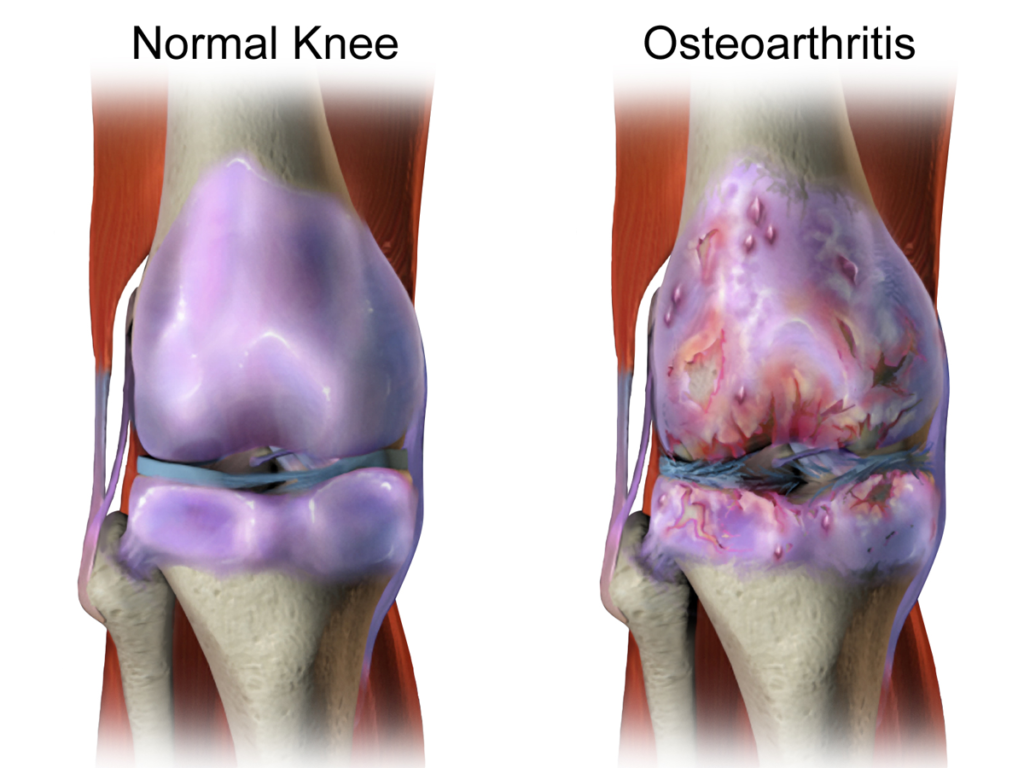Osteoarthritis – what do you need to know?

Osteoarthritis (OA), the most common type of arthritis, is a condition which causes gradual damage to joints and causes them to become painful and stiff. Some people also experience swelling and tenderness in the joint or grating/crackling sounds when moving affected joints.
In the UK, around a third of people aged 45 and over in the UK are affected and the risk of developing the disease increases as we get older. OA most commonly affects the knees, hips and small joints of the hands.
What causes Osteoarthritis?
Whist the exact cause of OA is not known, there are some factors which are thought to increase the risk of developing the condition:
- Age – the risk of developing OA increases the older you get
- You are female – OA is more common in women than in men
- Overweight/obesity – extra weight puts more strain on your joints, especially those which bear most of your weight, such as hips and knees
- Family history – OA can run in families
- Injury – a previous joint injury, or not allowing a joint to heal sufficiently after an injury or operation, can lead to OA
Can Osteoarthritis be treated?
Osteoarthritis is a long-term condition and there is no cure. However, it does not necessary get worse and can even improve gradually. There are some simple measures and some treatment options, which will help reduce the symptoms:
- Take regular exercise – no matter if you are in pain or your OA is bad, keep moving. Exercise can help keep your joints working well and reduce pain. A combination of aerobic and strength exercise is very beneficial. It may help to consult a physiotherapist for advice on what exercises are suitable for you
- Lose weight – losing weight will reduce the strain put on your joints
- Wear suitable footwear – something with a soft, thick cushioned sole will help reduce any jarring. Use an insole if necessary
- Heat or cold – using a head pad or an ice pack, or alternating between the two, can help to relieve pain in your joints. Never apply these directly to your skin though, wrap in a towel first or use specially designed patches.
- Painkillers – there are a number of options to help manage any pain you experience with OA. You can rub your joints directly with gels or creams containing a non-steroidal anti-inflammatory (NSAID) medicine or take oral NSAID tablets like ibuprofen or naproxen. Paracetamol, taken regularly rather than just when you are in pain, can also be of benefit.
What else do I need to know?
Should you be experiencing any of the above symptoms, it is a good idea to get an accurate diagnosis. Your GP may want to discuss your treatment/management options with you and give you further advise on living with Osteoarthritis.
The Walcote Practice provides assessment of pain which is unresponsive to standard analgesia and offers joint injection with steroids or HYALURONIC ACID where appropriate. We also have access to a network of subspecialists should onward referral and operative management be required.
You can make an appointment with one of our experienced Private GPs by calling us now on 01962 828175 or by emailing info@thewalcotepractice.co.uk


